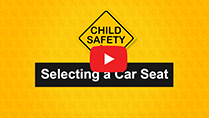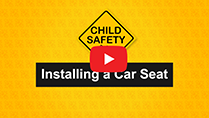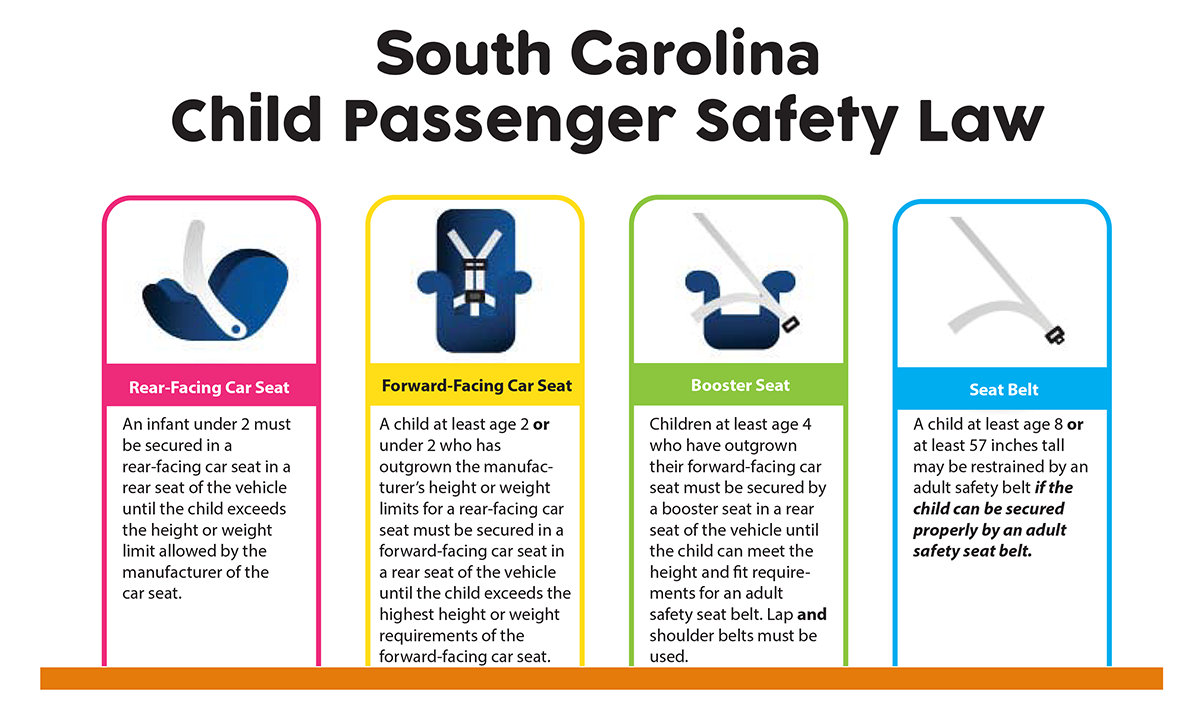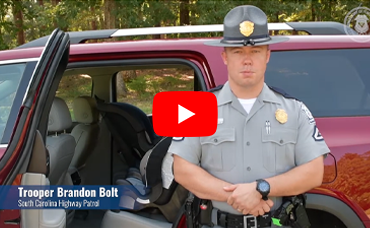
|
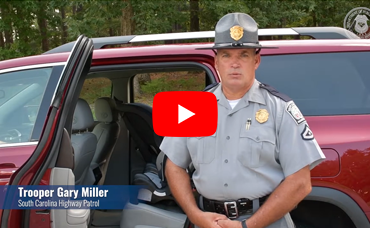
|
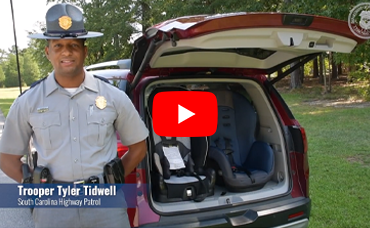
|
||
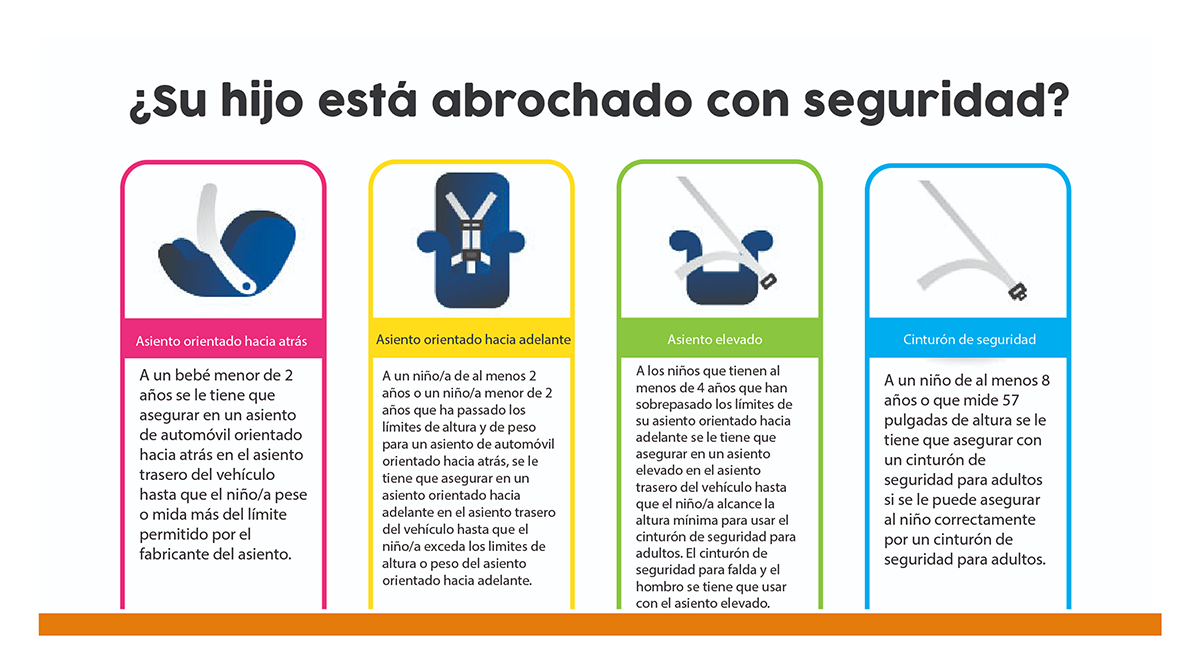
Selection
Car seats and booster seats are the basic protection systems for passengers who are too small to get the full safety benefits from adult seat belts. The goal of car seats is to provide small children with the same protection, or better, that adults obtain from seat belts and other safety equipment built into a vehicle. They are designed to keep children within the vehicle and close to their original seating position, to prevent contact with harmful interior surfaces or other occupants, and to provide “ride-down” by gradually decelerating the child as the vehicle deforms and absorbs energy from crash forces. For this to work properly, the right seat must be selected for the child’s height, weight, and developmental levels.
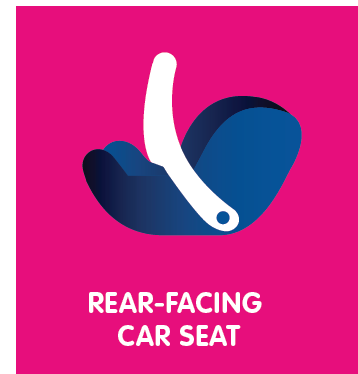
An infant under two (2) must be secured in a rear-facing car seat in a rear seat of the vehicle until the child exceeds the height or weight limit allowed by the manufacturer of the car seat.

A child at least age two (2) or under two (2) who has outgrown the manufacturer’s height or weight limits for a rear-facing car seat must be secured in a forward-facing car seat in a rear seat of the vehicle until the child exceeds the highest height or weight requirements of the forward-facing car seat.

Children at least age 4 who have outgrown their forward-facing car seat must be secured by a booster seat in a rear seat of the vehicle until the child can meet the height and fit requirements for an adult safety seat belt. Lap and shoulder belts must be used.
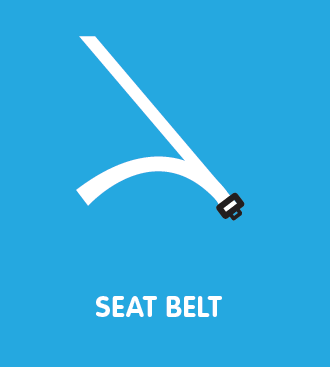
A child at least age eight (8) or at least 57 inches tall may be restrained by an adult safety belt if the child can be secured properly by an adult safety seat belt.
- Free Car Seat Inspection Stations
-
South Carolina Department of Public Health (DPH) offers free inspection stations throughout the state. Find a location near you by visiting this webpage and selecting the “Get Your Car Seat Checked by a Certified Technician” button at the top of the page. To make an appointment, select a location, call the number provided, and request an appointment for a car seat safety check.
- Find the Right Car Seat Calculator
-
Are you curious if your child is in the right car seat? Check out this NHTSA calculator! Just drop in your child’s birth date, height and weight and you’ll see if they need to be in a rear-facing, forwarding-facing, booster or seat belt.
- South Carolina State Law (English)
-
SC STATE LAW: ARTICLE 47.
CHILD PASSENGER RESTRAINT SYSTEMSECTION 1. Section 56-5-6410 of the 1976 Code is amended to read:
"Section 56-5-6410. (A) Every driver of a motor vehicle (passenger car, pickup truck, van, or recreational vehicle) operated on the highways and streets of this State when transporting a child under eight years of age upon the public streets and highways of the State must properly secure the child in the vehicle as follows:
(1) An infant or child under two years of age must be properly secured in a rear-facing child passenger restraint system in a rear passenger seat of the vehicle until the child exceeds the height or weight limit allowed by the manufacturer of the child passenger restraint system being used.
(2) A child at least two years of age or a child under two years of age who has outgrown his rear-facing child passenger restraint system must be secured in a forward-facing child passenger restraint system with a harness in a rear passenger seat of the vehicle until the child exceeds the highest height or weight requirements of the forward-facing child passenger restraint system.
(3) A child at least four years of age who has outgrown his forward-facing child passenger restraint system must be secured by a belt-positioning booster seat in a rear seat of the vehicle until he can meet the height and fit requirements for an adult safety seat belt as described in item (4). The belt-positioning booster seat must be used with both lap and shoulder belts. A booster seat must not be used with a lap belt alone.
(4) A child at least eight years of age or at least fifty-seven inches tall may be restrained by an adult safety seat belt if the child can be secured properly by an adult safety seat belt. A child is properly secured by an adult safety seat belt if:
(a) the lap belt fits across the child's thighs and hips and not across the abdomen;
(b) the shoulder belt crosses the center of the child's chest and not the neck; and
(c) the child is able to sit with his back straight against the vehicle seat back cushion with his knees bent over the vehicle's seat edge without slouching.
(5) For medical reasons that are substantiated with written documentation from the child's physician, advanced nurse practitioner, or physician assistant, a child who is unable to be transported in a standard child passenger safety restraint system may be transported in a standard child passenger safety restraint system designed for his medical needs.
Any child restraint system of a type sufficient to meet the physical standards prescribed by the National Highway Traffic Safety Administration at the time of its manufacture is sufficient to meet the requirements of this article.
(B) For the purposes of this section, any portion of a recreational vehicle that is equipped with temporary living quarters shall be considered a rear passenger seat."
Vehicle child restraints, vehicles lacking rear passenger seats, rear seating capacity exceeded
SECTION 2. Section 56-5-6420 of the 1976 Code is amended to read:
"Section 56-5-6420. If a motor vehicle lacks a rear passenger seat or if all of its rear seating positions are occupied by children under eight years of age, a child under eight years of age may be transported in the front seat of the motor vehicle if the child is secured properly in an appropriate child passenger safety restraint system or belt-positioning booster seat as described in Section 56-5-6410(1), (2), or (3)."
Time effective
SECTION 3. This act takes effect upon approval by the Governor.
Ratified the 15th day of May, 2017.
Approved the 19th day of May, 2017.
- South Carolina State Law (Spanish)
-
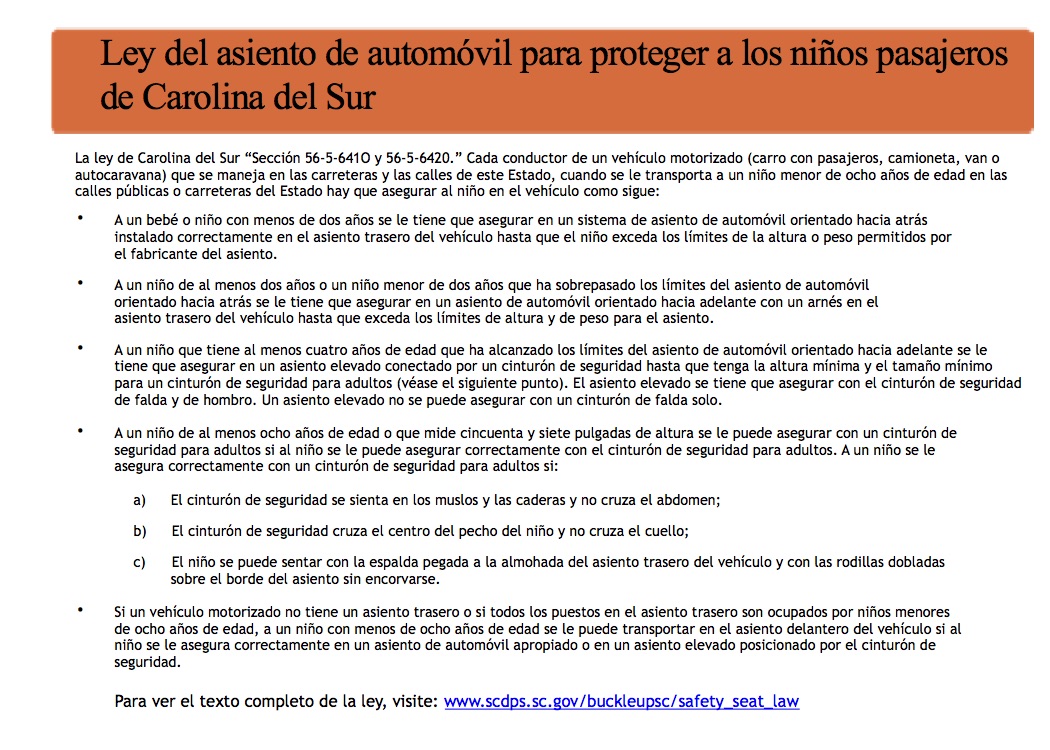
- Direction of Car Seat
-
Many children are advanced to the next seat stage before they are truly ready, which puts them at greater risk for injury in a crash. NHTSA suggests that children should ride rear-facing to the upper limits of their seats, and convertible seats with higher rear-facing weight and height limits allow many children to ride rear-facing well past the age of two (2). Children are also being moved prematurely from harnessed car seats into booster seats, as well as from booster seats into adult seat belts, which puts them at greater risk for injury if the seat belt does not fit them correctly.
- Location of Car Seat
-
For all children under the age of 13, the back seat is the safest place for them to ride. They are better protected from head-on collisions, which constitute about 60 percent of all crashes. In addition, they are not at risk for being injured by the passenger air bag, which is designed for adult protection in conjunction with a seat belt. Familiarize yourself with the location of the air bags in your vehicle, with the help of you vehicle owner’s manual. A rear-facing car seat should NEVER be placed in front of an active air bag. When considering the best location for your child’s car seat, you should also consider the needs of other passengers who ride in the vehicle and the seating position that will provide an optimal installation for your child’s car seat. The middle seat in the back is often referred to as the ‘best’ seat for car seats because of the protection from side impact crashes, but any back seat position is a preferred location to install car seats. Also consider the needs of your family; for example, if you often park on a busy street, place your child’s car seat on the curb side as opposed to the street side for optimal protection for you and your child when entering and exiting the vehicle.
- Installation of Car Seat
-
It is estimated that 46% of car seats on America’s roads are installed incorrectly (NCRUSS, 2015). A car seat that is incorrectly installed will not provide optimal protection in a crash situation, and may put your child’s safety at risk. While great strides have been made in reducing child fatalities and injuries since the 1970s, over half of children killed in crashes are either improperly restrained or completely unrestrained (FARS, 2015). Car seats can be installed with either the seat belt or the lower anchors, and forward-facing seats should always utilize the tether. Seat belts in vehicles made after model year 1996 will have a locking mechanism, which enables the seat belt to be locked to install car seats. This is most often achieved by a locking latchplate or switching the retractor into locking mode in order to lock the seat belt. Lower anchors are standard in vehicles manufactured after 2002, and are generally U-shaped metal anchors that are located in the bight (crack) of the vehicle seat. Current car seats come equipped with lower anchor webbing and attachments, which when threaded through the correct belt path and securely fastened onto the anchors, create a secure installation for that car seat. While the systems are different, they are equally safe, and it’s recommended to use the seat belt or lower anchors-but NOT both. Most car seats have not been tested with both systems used together, so please consult both the vehicle owner’s manual and car seat instructions for help. Tether non-use in forward-facing car seat installation is one of the most common installation errors, yet correct use can significantly decrease the risk of head injuries in a crash.
- Correct Harnessing
-
Correct harnessing or seat belt fit ensures your child is securely positioned in a car seat, booster seat, or vehicle seat, and is able to take advantage of the crash protection that the harness or belt provides. The harness holds the child down low in the car seat so he/she does not slide up and out of the car seat in a crash. Incorrect harnessing- often a loose harness or a retainer clip that is too low-is an extremely common misuse. Correct seat belt fit, for children in boosters or transitioning out of boosters, is very important and also a common error.

